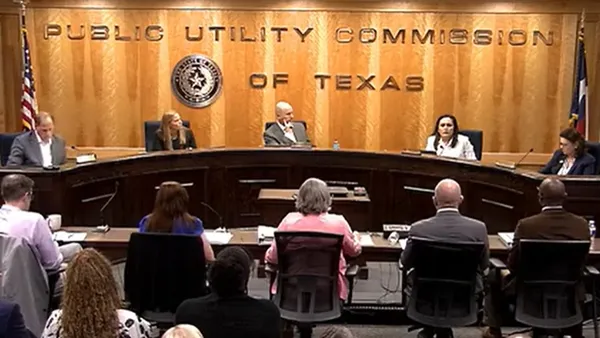Dive Brief:
- American Electric Power's proposal to guarantee income from coal facilities in Ohio has caught the attention of regulators in Pennsylvania, indicating they are concerned over the potential market implications, Pittsburgh Post-Gazette reports.
- AEP has proposed power purchase agreements to support an array of struggling plants, most of them coal-fired, and the Public Utilities Commission of Ohio is now considering the scheme.
- But the generator has responded in the media, saying Pennsylvania's concerns are "misguided," and the state "should not have a say in a Ohio decision."
Dive Insight:
Last week, the AEP filed with the Federal Energy Regulatory Commission (FERC), asking federal regulators to keep out of the proceeding. And now the company has turned its attention to Pennsylvania.
The Pennsylvania Public Utilities Commission said the Ohio proceedings will not stay inside state lines.
“This is not an Ohio issue or a Pennsylvania issue — this is a market issue, and we would be concerned about this type of arrangement wherever it was proposed,” Nils Hagen-Frederiksen, a spokesperson for the commission told the Pittsburgh Post-Gazette.
In an email to Columbus Business First, AEP spokeswoman Melissa McHenry said "The fact that Ohio has a hybrid system that combined regulation and competition is Ohio's choice. ... Pennsylvania should not have a say in a Ohio decision and should not try to force other states to conform to its model."
The company's proposal simply "provides some generation rate stability for Ohio customers," McHenry wrote.
AEP reached a settlement in 2015, calling for eight-year power purchase agreements covering 2,671 MW from nine AEP generating units — Unit 1 at the Cardinal coal plant, Units 4-6 at the Conesville plant, Units 1-4 at the Stuart plant and Unit 1 at Zimmer. The PPAs would also cover the utility's 423 MW contractual share of Ohio Valley Electric Corp. generation.
First Energy is pushing a similar proposal to keep two power plants operating – the Davis-Besse Nuclear Power Station in Oak Harbor and the W.H. Sammis coal-fired plant in Stratton.
Nuclear generator Exelon said last month it believed it could sell 3,000 MW of carbon-free generation into the state –$2 billion cheaper than FirstEnergy's proposal — despite not owning any instate generation resources.
Dynegy and NRG Energy have appealed to federal regulators to rescind a waiver that allows both AEP and FirstEnergy to engage in affiliate power transactions, with Dynegy saying it can provide the power cheaper – to the tune of billions in savings.
That led AEP to call for FERC to stay out of the process, saying the federal agency to leave decisions over Ohio's power supply to the state, and arguing that the state is doing a thorough review of its proposals.
"There is no reason for the Commission to convene its own hearing to interrupt and second guess the PUCO’s review," AEP said in a filing with the federal commission.













